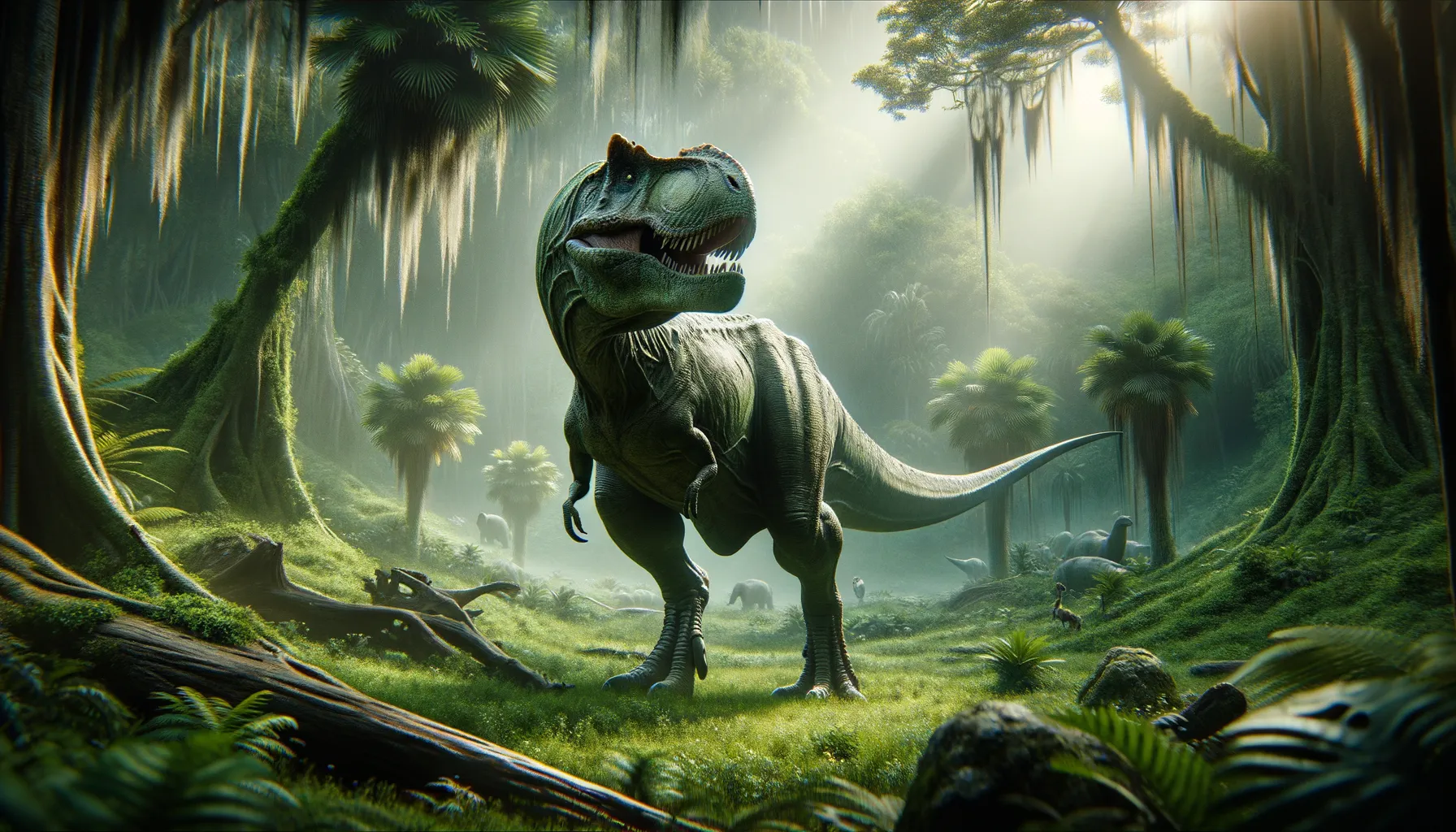
Teratophoneus
A fearsome predator of ancient lands.
Period
triassic
Length
Roughly 6 meters in length.
Height
Around 2 meters tall at the hip.
Weight
Approximately 1,000 kg.
Teratophoneus was a carnivorous dinosaur that roamed the landmass known as Laramidia during the Late Cretaceous period. Belonging to the tyrannosaurid family, it was a formidable predator with a robust skull and reduced forelimbs. Fossils have provided invaluable insights into their structure and way of life, helping paleontologists understand the evolutionary adaptations that occurred in these dinosaur giants toward the end of the dinosaur era.
Diet
Teratophoneus was a carnivore, feeding primarily on large herbivorous dinosaurs. Its diet likely included young or injured hadrosaurs and ceratopsians that it could overpower using its strong jaws.
Hunting
With its impressive bite force and keen senses, Teratophoneus likely employed ambush tactics, striking swiftly at its prey. Its teeth were well-suited for slicing flesh, indicating a preference for capturing sizable prey to sustain its caloric needs.
Environmental challenges
During its time, Teratophoneus faced a changing environment with fluctuating temperatures and evolving plant life. Competition among predators would have been fierce, necessitating strategic hunting and territorial behaviors. Surviving in such a dynamic ecosystem required adaptability, from dietary variations to shifts in hunting grounds.
Speed
Moderate speed, capable of short bursts.
Lifespan
Estimated around 20 to 30 years.
First discovery
First discovered in 1999 in Utah.
Fun Facts
- Teratophoneus means 'monstrous murderer,' a fitting name for this fearsome predator.
- It lived approximately 77 million years ago during the Late Cretaceous period.
- Teratophoneus was a member of the Tyrannosaur family, which also includes the famous Tyrannosaurus rex.
- Its fossils have primarily been found in what is now Utah, USA.
- Unlike some other large tyrannosaurs, Teratophoneus had a relatively short and deep skull.
- Scientists believe Teratophoneus may have been a social hunter, possibly hunting in groups.
- Despite its fearsome name, Teratophoneus was smaller than T. rex, measuring about 20 feet long.
Growth and Development
Teratophoneus, like other tyrannosaurids, underwent rapid growth during its juvenile stages. This fast growth rate required substantial nutritional intake, pushing young dinosaurs to develop hunting skills quickly. Over time, their skeletal structure matured, enhancing their predatory capabilities as they reached full size.
Habitat
Teratophoneus lived in a diverse habitat with forests, floodplains, and coastal areas. These ecosystems provided rich food sources and varied prey, supporting their carnivorous lifestyle. Seasonal changes would have affected prey availability, requiring migration or behavioral adaptations to secure food.
Interaction with other species
Teratophoneus likely interacted with other large predators, where territorial disputes and competition were common. It coexisted with various herbivorous dinosaurs, which it preyed upon. Socially, it may have had minimal interactions outside of mating, focusing more on solitary activities related to hunting and territory.
Natural lifespan
Teratophoneus could live up to 30 years under natural conditions.
Reproduction
Teratophoneus, like many dinosaurs, likely laid eggs. Parental care could have been minimal, with hatchlings requiring rapid development to avoid predation. Displays or calls may have been used during mating seasons to attract partners or establish breeding territories.
Social behaviour
Teratophoneus likely had a solitary nature, focusing primarily on individual survival and hunting. Interaction with others of its kind may have been limited to reproduction or territory disputes. This solitary lifestyle maximized their hunting efficiency and reduced competition for resources.
Fossil locations
Fossils of Teratophoneus have been primarily located in the Kaiparowits Formation of southern Utah. These finds have provided crucial insights into the diversity of tyrannosaurids in North America during the Late Cretaceous.
